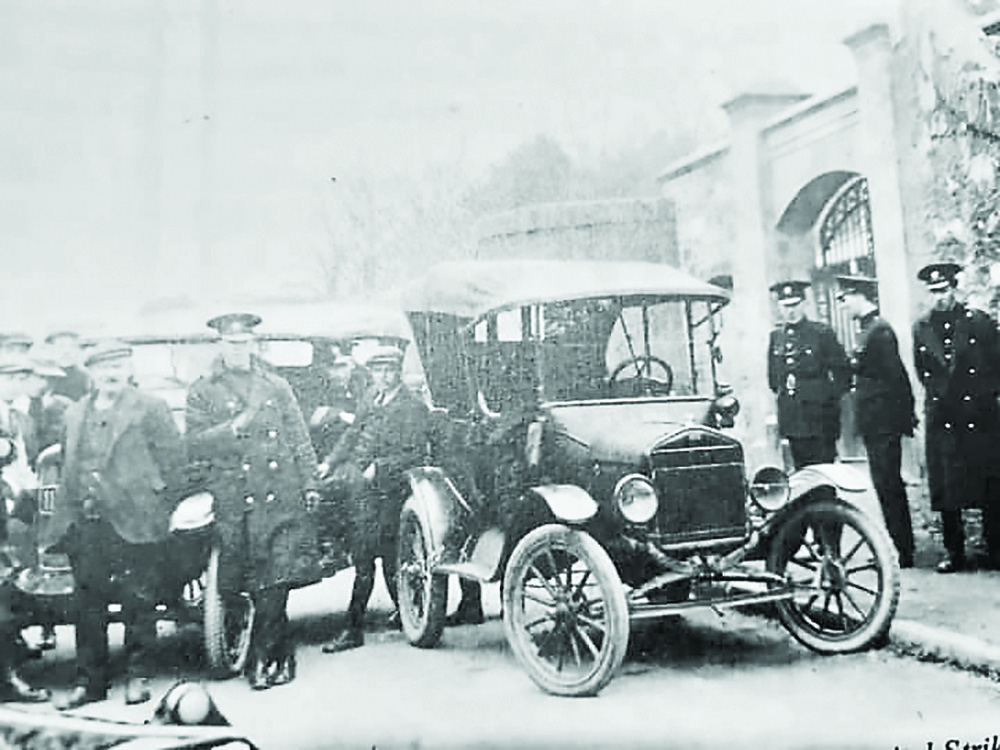One hundred years ago this week a great strike took place at the Tirconaill Mental Hospital (St. Conal’s Hospital) in Letterkenny that would be reported in media outlets around the world.
On April 1, 1924 over 100 employees withdrew their labour and marched out the gate of the institution leaving just seven employees to look after more than 600 mentally ill patients. It was a strike that would capture the public imagination and divide opinions.
The hospital had first opened in May 1866 to provide a place of refuge, care, and psychiatric treatment to the population of County Donegal.
Then known as the Donegal District Lunatic Asylum it was built to provide accommodation for 300 inpatients.
In subsequent years it was enlarged in response to increasing demand until it had in excess of 700 patients by the early 20th century.
Many factors would combine to increase the costs of running such a large institution and by the end of World War 1 the hospital was experiencing financial difficulties.
It had now become the most expensive hospital in Ireland to run and in December 1921 the Board of Management, at the suggestion of Donegal County Council, wrote to ask Dáil Éireann to send down an inspector to enquire into the financial and general working of the institution.
Owing to the outbreak of the civil war no enquiry would take place until October 1923.
When the enquiry was held, it reported that “the administration of the hospital was slack to an extraordinary degree (with resulting extravagance) and that several of the officers were not carrying out their duties efficiently; that the nursing staff, from a lack of supervision, had “an imperfect sense of their responsibilities”, and that the high cost of maintenance was not due to a high standard of care and treatment”.
In forwarding the report, the Minister pointed to the necessity of immediate steps being taken to reform the management and bring about retrenchment. Several senior officers of the hospital resigned.
The response of the Board of Management was to unilaterally impose a 10% pay cut on all staff from April 1, 1924.
The Irish Mental Hospital Workers Union, of whom the hospital staff were affiliated, threatened strike action if this went ahead.
The matter would be further complicated by the appointment of a stone mason to the position of Head Male Attendant, whose terms and conditions required him to cease being a member of the Union, something that his predecessor was not required to do.
At 7am on Ttuesday morning, April 1 the male and female staff assembled in front of the hospital, and with music playing and banners flying, they marched out the main gate to commence a strike.
Inside of the building seven staff remained, including the Resident Medical Superintendent (Psychiatrist), the medical doctor, clerk, storekeeper, the Land Stewart, and the Head Male Attendant and Head Female Nurse. Patients were organised into workgroups to look after each other, and they showed remarkable resilience under unprecedented circumstances.
Initially the strikers’ picket was a good humoured and cordial affair, but as days passed, and the hospital management offered employment to “outsiders” to replace them, the atmosphere became more embittered and acrimonious.
Meetings in support for the strikers were organised throughout the county in towns including Letterkenny, Milford, Carrigart, Lifford, Castlefin, Ballybofey, Donegal Town, and Ballyshannon, and were well attended.
After two weeks, the strikers were informed that they were dismissed from their employment and their pensions were declared forfeit.
At a meeting in support of the workers in Letterkenny, Mr. O’ Connor, union organiser, said they would blockade Letterkenny before the dispute was over.
Local firms refused to handle goods destined for the hospital in sympathy with the strikers and deliveries were stopped at the entrance gate.
Stones were thrown and shots fired on Letterkenny’s main street. A series of violent incidents occurred between the strikers and those who were replacing them, forcing members of An Garda Síochána to baton charge crowds to maintain order.
The hospital management persevered in their determination to hold out and they eventually succeeded in their objectives.
The strikers were faced down and eventually defeated, with many of the younger members emigrating, and older members falling on hard times and destitution. It generated ill feelings in the town for many decades later.
The extraordinary story of the strike will be commemorated by the County Donegal Historical Society on Sunday, June 9, 2024 when local historian Hugh Devlin will give a talk on the subject at the Donegal County Museum, High Road, Letterkenny, and during a walk around the grounds of St. Conal’s Hospital afterwards.










